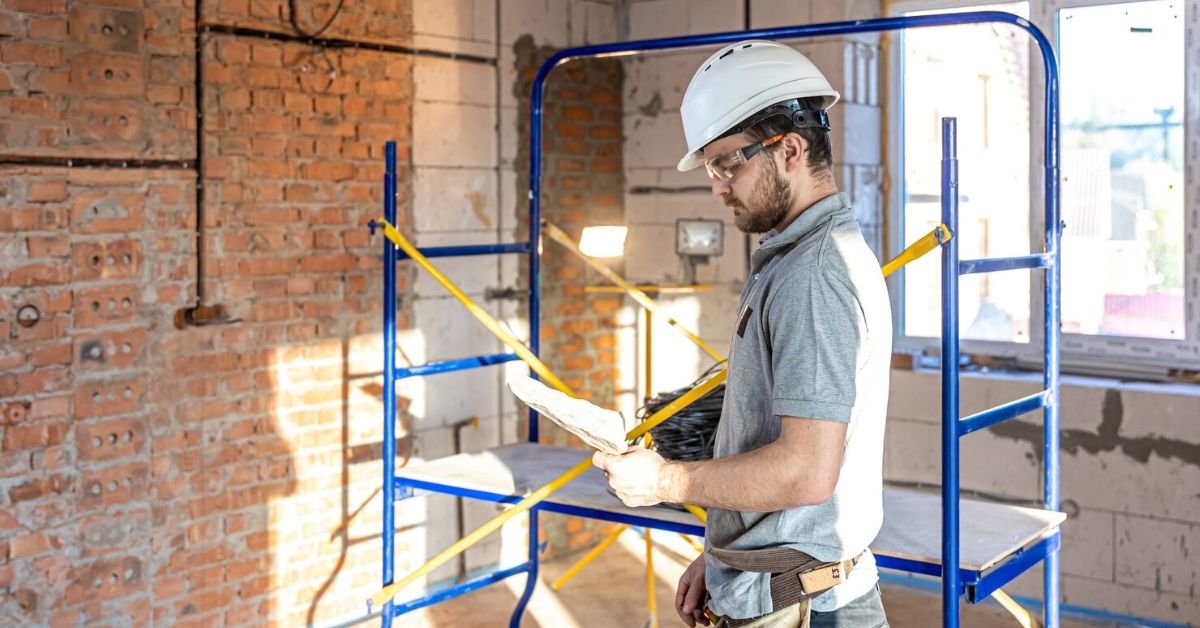Scaffolding is everywhere—up in the city, out in the countryside, attached to every building mid-renovation. It’s one of those things most people don’t give a second thought to. But for folks in construction and site management, scaffolding is a serious business. Lives literally depend on it being safe.
That’s where scaffold inspection training comes in. It’s not about just giving a quick once-over and saying, “Yeah, looks alright.” It’s about proper checks, knowing the rules and being clued up on what could go wrong. This blog breaks down what you’ll actually learn in a scaffold inspection course. Whether you’re just starting out or thinking about adding to your qualifications, this guide’s got you covered.
What is a Scaffold Inspection Course?
At its core, a scaffolding inspection course teaches you how to properly assess scaffolding to make sure it’s safe for use. You’ll get familiar with different scaffold systems, the regulations behind inspections and the right way to report any faults you find.
Key Topics Covered in Scaffold Inspection Training
Scaffold Types and Components
First off, you’ll get to grips with the anatomy of scaffolding. Every scaffold is made up of basic parts that include ledgers, standards, braces, transoms and more. You’ll learn the names, the roles they play and how they all work together to create a stable structure.
You’ll also least about the different types of scaffolds synch as independent tied scaffolds, mobile towers and system scaffolds.
Common Scaffold Hazards
Scaffolding inspectors must be aware of the most common causes of scaffolding-related accidents. Inspection training courses cover in detail the most common hazards and accepted control measures against them.
Everyone who works with or near scaffolding must be provided with an awareness of the risks of scaffolding. A scaffolding awareness course is more suitable for workers who are not responsible for inspections.
Legal Requirements and Regulations
Scaffolding works are subject to several peces of legislation in the UK. Inspection training must cover the major duties towards scaffolding inspections under these laws.
Reporting and Documentation
Scaffolding inspectors must also know the correct procedure for documenting and reporting their findings. In the event of an incident, having accurate records can also make a huge difference in proving compliance and showing due diligence.
Those who work with scaffolding must also be aware of the risks and control measures of work at height. Employers can provide workers with a work at height training course to ensure they understand the risks and safe working practices.
Practical Skills You’ll Gain
It’s not all textbooks and regulations—there’s a big focus on practical skills, too. By the end of the course, learners should be able to roll up their sleeves and carry out confident inspections.
Identifying Unsafe Structures
One major takeaway? You’ll be able to spot when something’s not quite right. Whether it’s a dodgy joint, a bent pole or poor assembly, you’ll know what to look for and how to assess the risk.
Using Inspection Tools
You’ll also get trained in using common inspection tools. Things like:
- Spirit levels to check for alignment
- Tape measures to verify dimensions
- Cameras or phones to document issues
These tools might seem simple, but they’re vital for an accurate, thorough inspection.
Completing Inspection Reports
Once the inspection’s done, it’s time to write it up. The course shows you how to complete scaffold inspection reports in line with regulations. You’ll practice filling out forms, noting key details and suggesting actions if something needs fixing.
Certification and Course Format
Let’s talk logistics. How do you actually take the course, and what do you get out of it?
Online vs In-Person Learning
Some providers offer online scaffold inspection courses, which are great for convenience. You can work through the modules at your own pace, usually from home or the office.
Others run in-person training, which often includes hands-on demonstrations and practical assessments. This format suits learners who benefit from face-to-face teaching or want direct access to trainers for questions.
Each has its perks—it just depends on your learning style and schedule.
Assessment and Qualification
Once you’ve completed the course, there’s usually a short assessment. This could be a multiple-choice test, a written report or a practical demo. Pass that, and you’ll receive a certificate of competence, often valid for a specific period (usually 3 to 5 years).
Why Scaffold Inspection Training is Essential
Because scaffolding accidents can be deadly—and they’re often preventable. Proper training means fewer mistakes, fewer injuries and far less risk of falling foul of HSE or facing legal trouble.
Scaffold inspection training doesn’t just tick a box. It empowers workers to take charge of safety, spot problems early and protect themselves and their teams.
It also boosts your confidence on site. Knowing what you’re doing, why you’re doing it and how to back it up with proper documentation makes a world of difference.











